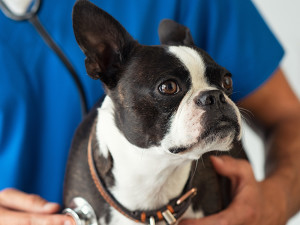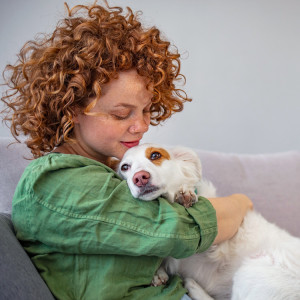15 Terms You Should Know When Choosing Pet Insurance
Overwhelmed by all the small print and jargon? We’ve got you
You’ve decided to do the responsible, forward-thinking thing and get your pet insured. Good on you. But before you can sign on the dotted line, you have to figure out exactly what kind of policy works best for your pet – which might send you reaching for the dictionary.
Whether it’s your own or your pet’s, understanding insurance fine print can be overwhelming. All that medical and financial jargon is enough to make most people’s heads spin. Thankfully, ManyPets pet insuranceopens in new tab has put together an insurance glossary with some of the most important terms for you to know when you’re searching for the right policy for your pet.
Below are 15 words and phrases that will help you navigate the pet insurance landscape.
1. Accident and illness coverage
Let’s start with the basics. Accident and illness coverage provides financial protection against unexpected veterinary expenses due to (you guessed it!) accidents or illnesses.
Accident coverage: this covers costs associated with unexpected events like injuries or trauma, such as broken bones, cuts, foreign body ingestions and other sudden medical needs stemming from accidents. Some pet insurance companies have accident-only plans.
Illness coverage: illness coverage addresses the costs of medical care for pets who have various illnesses, ranging from minor ailments to serious diseases. It generally covers the diagnostics, medication and treatments necessary to manage and cure a pet’s health condition.
2. Excess
An excess is the amount pet parents pay out-of-pocket before their pet insurance starts to cover the costs of veterinary care. Choosing the right excess can influence the premium cost (we’ll get to premiums – don’t worry).
3. Pet insurance claim
A pet insurance claim is a request for payment submitted by the pet parent to their insurance provider to reimburse expenses for covered veterinary care. The claims process involves providing documentation of the pet’s treatment and costs.
4. Hereditary and congenital conditions
Hereditary and congenital conditions refer to diseases or disorders that pets inherit genetically or are born with. Coverage for these conditions helps manage the cost of care related to inherited diseases or birth defects. Pet insurance companies generally cover hereditary conditions, just like any other condition, if the onset of the condition does not pre-exist the policy.
5. Pre-existing conditions
That leads us to pre-existing conditions, any injuries or illnesses that a pet has before the start or during the waiting period of an insurance policy. Most pet insurance plans don’t cover these conditions, making it crucial to obtain coverage before any problems arise. However, some pet insurance companies may cover some or most conditions after a certain period of time without symptoms, diagnosis or treatment.
6. Exclusions
Exclusions in pet insurance policies are specific conditions or situations that are not covered, meaning the insurer will not pay for related claims. Common exclusions include pre-existing conditions and routine vet care.
7. Preventative care plan
If you would like your routine vet care covered, you could opt for a wellness plan or preventative care plan, an optional addition to pet insurance. It covers routine care that promotes general health, such as regular check-ups, vaccinations, parasite prevention, dental cleanings and vitamins/supplements. These plans help offset the costs of preventative care to maintain a pet’s overall well-being.
8. Waiting period
The waiting period in pet insurance is a specified time from the start of the policy during which certain coverages are not yet active. It prevents claims for conditions that occur immediately after obtaining the policy, so that coverage is only for conditions that are not pre-existing.
9. Premium
The premium is the amount paid by the pet parent to keep the pet insurance policy active, typically charged monthly. The cost of the premium is influenced by various factors, including the pet’s age, breed, location and chosen coverage options.
10. Reimbursement level/percentage
The reimbursement level or percentage is the proportion of covered veterinary expenses the insurance company will pay after the excesses are met. Higher reimbursement rates lead to lower out-of-pocket costs for pet care but often come with higher premiums.
11. Annual coverage limit
The annual coverage limit is the maximum amount a pet insurance policy will pay out in a given policy year for covered expenses. Once this limit is reached, the pet parent must cover any additional costs. Some pet insurance companies (like ManyPets) don’t include annual coverage limits in any of their policy options.
12. Diagnostics
Pet diagnostics cover the tests and procedures used to identify a pet’s illness or injury, including blood work, X-rays and ultrasounds. Most pet insurance plans cover diagnostics for accident and illness visits.
13. Alternative therapy coverage
Alternative therapy coverage includes non-traditional treatments such as pet acupuncture (it’s a real thing!), chiropractic care and hydrotherapy that might be recommended for a pet’s recovery or well-being.
This coverage allows pet parents to explore diverse treatment options beyond conventional veterinary care. Some pet insurance companies cover alternative treatments under the condition that they’re performed by a registered vet to treat a covered accident or illness.
14. Bilateral condition
A bilateral condition is any health condition that can affect both sides of your pet’s body – for example, an illness that affects your pet’s right eye after having previously affected their left eye. Some pet insurance companies exclude coverage of all pre-existing bilateral conditions.
Different pet insurance companies have different exclusions when it comes to bilateral conditions. Some companies won’t cover bilateral conditions that arose before coverage began. And some policies exclude coverage for conditions that develop on one side if a related condition previously affected the opposite side, regardless of whether the initial condition occurred before or during the coverage period.
15. Chronic conditions
Chronic conditions are long-lasting, ongoing health issues that require continuous care, such as diabetes or arthritis. Pet insurance companies will generally cover chronic conditions that arose before the coverage period, and maintain coverage as long as the policy never lapses.











